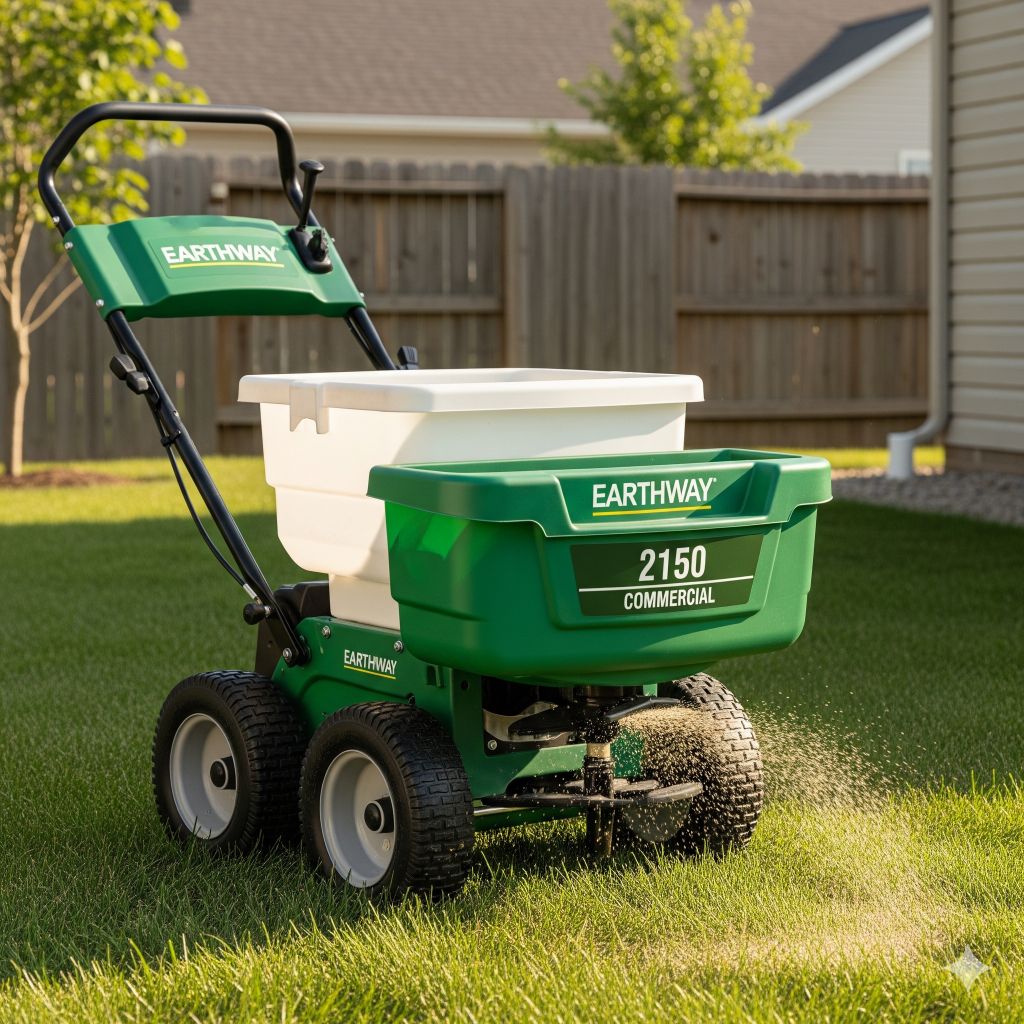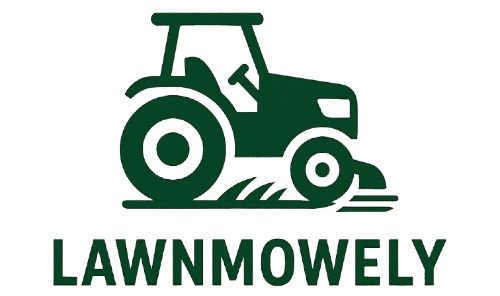
EarthWay spreaders are trusted by homeowners, turf professionals, and landscapers for their accuracy and durability. Whether you’re applying fertilizer, grass seed, lime, or ice melt, getting the right EarthWay spreader setting ensures consistent coverage and saves you money.
In this comprehensive guide, we’ll explore how EarthWay settings work, provide detailed charts, explain calibration in simple steps, compare EarthWay with other brands, and share pro tips to make every application accurate.
1) Understanding EarthWay Spreader Settings
- EarthWay spreaders use a dial or lever that adjusts the size of the opening in the hopper gate. Higher numbers = larger openings = more product flow.
- The dial numbers on EarthWay models range from 1 to 30 (on most broadcast models).
- The correct setting depends on:
- The material type (fertilizer, seed, lime, ice melt).
- Desired application rate (e.g., 3 lb per 1,000 sq ft).
- Walking or towing speed.
Key Principle: Use the manufacturer’s recommendations as a starting point, then calibrate for accuracy.
2) Types of EarthWay Spreaders
Broadcast (Rotary) Spreaders:
- Spread product in a wide fan pattern (8–12 ft or more).
- Great for lawns, sports fields, and large areas.
Drop Spreaders:
- Drop granules straight down the width of the hopper.
- Ideal for precise applications along driveways, flower beds, or small lawns.
Hand‑Held Spreaders:
- Portable units for spot treatments or very small lawns.
- Common for ice melt or patch seeding.
Tow‑Behind Spreaders:
- Designed for larger lawns, estates, or commercial use.
- Attach to a garden tractor, zero‑turn, or ATV.
3) Calibration: The EarthWay Method
EarthWay recommends using their “shut‑off calibration method” for accuracy:
- Determine the application rate on the bag (e.g., 3 lb per 1,000 sq ft).
- Weigh out enough material to cover a small test plot (usually 200–400 sq ft).
- Set the spreader to the suggested setting from the EarthWay chart.
- Walk or tow the test area at 3 mph (100 ft in 23 seconds).
- Weigh the material applied.
- Adjust the setting higher or lower until the application rate matches the label.
Tip: Always use at least ⅓ hopper capacity in your test so the flow is consistent.
4) EarthWay Spreader Settings Charts (Starter Guide)
Here are generalized starting settings for common products in EarthWay spreaders. Fine‑tune by calibration.
4.1 Fertilizer Settings
| Fertilizer Type | Application Rate | Setting (Broadcast 2150/2170/2600A Plus) | Spread Width | Speed |
|---|---|---|---|---|
| Balanced Fertilizer (10‑10‑10) | 3 lb/1,000 sq ft | 14–16 | 8–10 ft | 3 mph |
| High‑N Fertilizer (Urea 46‑0‑0) | 1 lb/1,000 sq ft | 8–10 | 8–10 ft | 3 mph |
| Starter Fertilizer | 1–1.5 lb/1,000 | 10–12 | 8–10 ft | 3 mph |
| Organic Fertilizer (granular) | 5–7 lb/1,000 | 18–20 | 8–10 ft | 3 mph |
4.2 Grass Seed Settings
| Seed Type | Application Rate | Setting (Broadcast) | Spread Width | Speed |
|---|---|---|---|---|
| Fine (Bluegrass, Rye) | 2 lb/1,000 sq ft | 7–9 | 7–9 ft | 3 mph |
| Coarse (Tall Fescue) | 5 lb/1,000 sq ft | 10–12 | 8–10 ft | 3 mph |
| Bermuda / Warm Season | 2–3 lb/1,000 sq ft | 8–10 | 8–9 ft | 3 mph |
4.3 Lime & Gypsum Settings
| Material | Application Rate | Setting | Spread Width | Speed |
|---|---|---|---|---|
| Pelletized Lime | 10 lb/1,000 sq ft | 20–24 | 8–10 ft | 3 mph |
| Gypsum | 10–15 lb/1,000 sq ft | 20–22 | 8–10 ft | 3 mph |
4.4 Ice Melt Settings
| Material | Application Rate | Setting | Spread Width | Speed |
|---|---|---|---|---|
| Calcium Chloride Pellets | 2–4 oz/yd² | 18–22 | 8–12 ft | 3 mph |
| Rock Salt (Halite) | 3–5 oz/yd² | 20–25 | 8–12 ft | 3 mph |
5) Comparing EarthWay with Other Brands
| Feature | EarthWay | Scotts | Agri‑Fab | Brinly |
|---|---|---|---|---|
| Dial Range | 1–30 scale (fine tuning) | Proprietary small range | Simple 1–10 style | Similar to Agri‑Fab |
| Durability | High (metal gears, pneumatic wheels on pro models) | Light duty plastic gears | Good for residential tow‑behind | Strong hoppers, good value |
| Pattern | Very even rotary pattern | Calibrated for Scotts products only | Reliable, but depends on speed | Good rotary design |
| Best Use | Pros & serious homeowners | Homeowners with Scotts products | Home + acreage | Home + acreage |
Takeaway: EarthWay excels in precision and professional durability. Scotts is plug‑and‑play but limited. Agri‑Fab and Brinly offer great tow‑behind options for larger properties.
6) Application Tips for EarthWay Spreaders
- Crosshatch Application: Apply half the product north‑south, half east‑west to prevent striping.
- Edge Control: Close the deflector shield or gate near sidewalks and flowerbeds.
- Consistent Pace: Walk at 3 mph; tow at a steady mowing gear.
- Avoid Overlap: Broadcasting doubles the rate at overlaps—be careful with your turns.
- Start/Stop Rule: Always close the gate before stopping or turning to prevent “hot spots.”
- Clean After Use: Fertilizer is corrosive; wash and dry the spreader after every application.
7) Troubleshooting EarthWay Spreader Issues
- Uneven Spread Pattern → Check impeller vane wear, ensure hopper throat is centered.
- Clogging or Bridging → Product damp or too fine; use a screen or agitator.
- Gate Doesn’t Close Fully → Cable/rod stretched; adjust linkage.
- Striping in Lawn → Walking speed inconsistent; overlap uneven; recalibrate.
- Material Runs Out Too Fast → Setting too high or walking too fast.
8) Quick Conversion & Math Reference
- 1 acre = 43,560 sq ft.
- 1 lb/1,000 sq ft = 43.56 lb/acre.
- To calculate coverage: (Bag weight ÷ application rate) × 1,000 = coverage in sq ft.
- Example: 40 lb bag at 3 lb/1,000 → 13,333 sq ft coverage.
9) Pro Tips from Turf Pros
- Mark Settings: Use a paint pen on the dial once you find the right setting.
- Weigh, Don’t Guess: Always weigh product used in calibration.
- Wind Awareness: Don’t spread fine seed on windy days.
- Carry a Cheat Sheet: Keep a laminated card with settings for your common products.
- Seasonal Adjustments: Humidity can affect product flow—open ½ notch more in wet seasons.
10) Frequently Asked Questions
Q1: Why are settings different between models?
Because hopper throat size, impeller design, and dial scales vary. Always calibrate your exact spreader.
Q2: Can I use Scotts settings on EarthWay?
No. Scotts publishes for Scotts spreaders only. Translate the bag’s lb/1,000 rate into EarthWay settings by calibration.
Q3: What’s the best pace to walk?
3 mph (100 ft in 23 seconds). Faster = heavier rate.
Q4: How often should I calibrate?
At least once per season, and any time you change products.
Q5: Can I spread compost or very organic mixes?
EarthWay is best for dry, free‑flowing granules. Compost clogs; use a drop spreader or topdresser instead.
Q6: Are EarthWay spreaders good for ice melt?
Yes, especially pro models with corrosion‑resistant parts. Use higher settings for coarse rock salt.
11) Quick‑Start Card (Printable)
- Check bag for application rate (lb/1,000 sq ft).
- Select starting setting from chart.
- Mark a test plot (200–400 sq ft).
- Run spreader at 3 mph, weigh usage.
- Adjust setting to match target.
- Apply in two directions for uniformity.
- Record dial number for next time.
Final Word
EarthWay spreaders are precise, professional‑grade tools that reward calibration. With the right settings, consistent walking or towing speed, and attention to overlap, you can achieve lush lawns, accurate fertilization, and efficient ice melt application. Calibrate once, record your settings, and you’ll save time, money, and frustration on every job.

I’m David man behind Lawn Mowerly; I’ve been dealing with lawnmowers and Tractors with my father since I was a kid. I know every make and model and what each one is capable of and love helping people find the perfect equipment for their needs.
